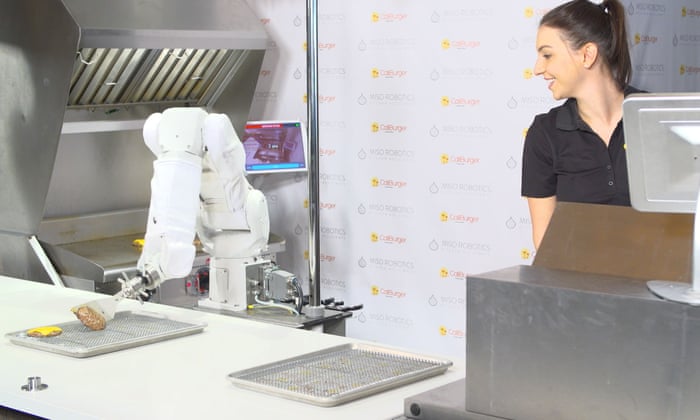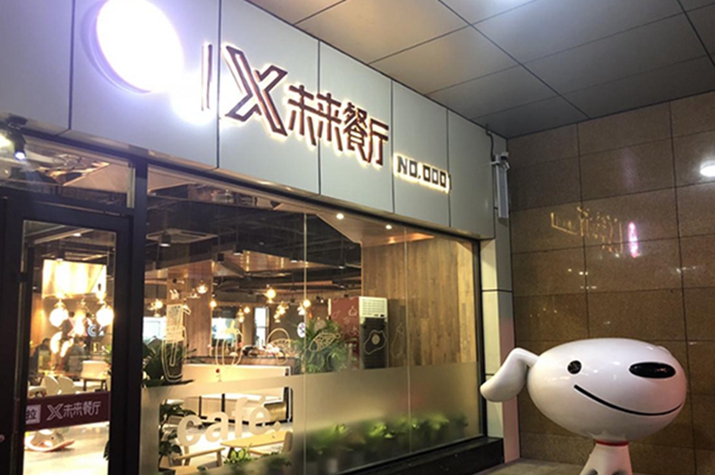Eating Out Automatically
"It is very early days to tell what will happen with coronavirus."
"But we are seeing a lot of interest in how our technology can be used to manage food waste, cross contamination, and offer a hands-off approach to handling food."
"The biggest challenge is that food is non-linear. An Amazon or Tesla can use robots to pick up a particular thing on an assembly line. Food it not like that. You have to have flexibility and mimic what a human can do."
Barney Wragg, co-foundiner, Karakuri, robotic food preparation startup, London
:no_upscale()/cdn.vox-cdn.com/uploads/chorus_asset/file/11665205/2018_eater_creator_alaw_vrg_0011.jpg) |
"[It is] fast-tracking emerging tech."
"Food-prep robots are still in the novelty phase. People go to restaurants because of the human chef. Personal service is often embedded in the dining experience."
"But again, coronavirus is helping to change these attitudes. I can see robots eventually taking over for fast-food workers in large-scale food prep environments the same way that robots took over for assembly line workers in factories"
"When we come out of this, the public will at least be more aware of robotic options, even if they don't immediately accept them."
Victoria Petrock, analyst, eMarketer
"I've been hesitant to order food with what is happening with coronavirus."
"Covid can live on some surfaces for several hours."
Jeffrey Ng, chief science officer, Founders Factory
 |
| Flippy, a robot cook that works at Caliburger in Pasadena. Photograph: Miso Robotics |
Samsung has featured robot cooks at technology shows, rolling them out to impress crowds. They have not yet, however, become a feature in kitchens, but that might possibly be on the cusp of change, given the sudden presence of a viral threat and the highlighted need to practise not merely fundamental safe food handling, but energetically enhanced food safety practices.
While little evidence exists that the novel coronavirus can be spread through preparation of food providing it is handled according to standard hygiene standards for food and thoroughly cooked, there are some in the industry who believe reluctance of the public to eat food handled by strangers might just represent the accelerant needed for the uptake of automation.
In the interests of reducing human contact with food once it is cooked, the use of a robot at the point of service would make good sense. Staff waste management shortfalls could be improved with the use of automation. Using robot and artificial intelligence can result in better monitoring of how much food is required at any given time, according to Karakurt.
 |
A worker lifts a lunch bowl off the production line at Spyce.
AP
|
Staff time can be freed up with the use of robotic servers taking the place of humans. A number of food technology startups are leveraging robotics. A burger-flipping robot named Flippy, from Miso Robotics has been used in California to prepare hamburgers. Briggo, a robot barista, brews coffee orders on a smartphone instead of waiting for a human. True, most of the technology is still at the experimental stage.
At the present time, the reality is that for now such robots are not yet advanced sufficiently to fully take the role of a literal iron chef. Karakurt has built a working food-picking robot for sweets or ice cream and is now developing its DK-One, a robot designed to prepare up to 360 custom meals hourly, using 48 ingredients.
Retail delivery drone sales have increased and will hit 44,000 by next year. Such drones are already delivering food supplies in China. "We have seen a huge increase in demand. Our robots can play a valuable role (as elderly/vulnerable) customers can get their food and groceries straight to their door", explained Henry Harris-Burland of Starship Robotics.
Robots are replacing waiters in the food sector in some areas of the Far East, where in Shanghai and Hong Kong, robot waiters trundle hotel corridors to service people forced into total isolation as a result of symptoms linked to the coronavirus.
 |
| X Future Restaurant (PEOPLE'S DAILY) |
Labels: Atomation, Food Service Industry, Novel Coronavirus, Robotics

0 Comments:
Post a Comment
<< Home